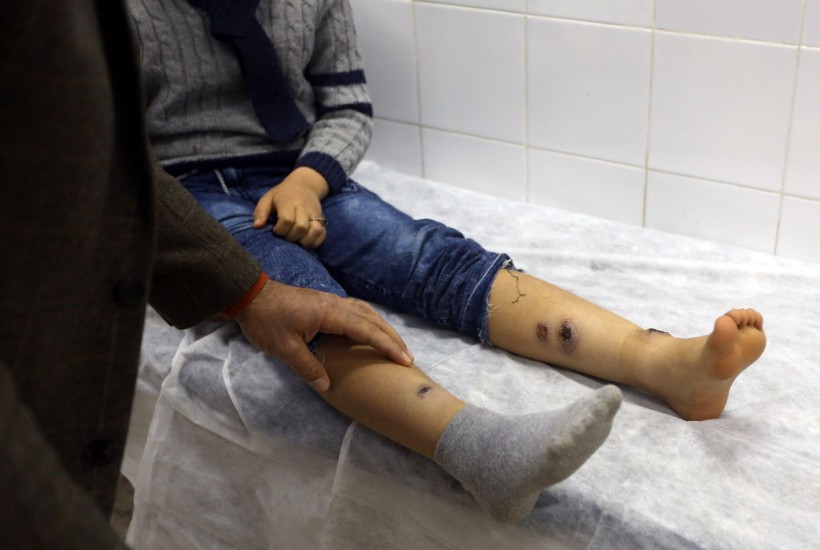
A boy receives treatment for Leishmaniasis at the Bir Al-Ostah Milad Hospital for Dermatology in the Libyan capital, Tripoli on February 11, 2019.
CDC (Centers for Disease Control and Prevention) claims that this skin-disfiguring parasite could be endemic in Texas.
Aside from this, health officials warned that this disease might be locally spreading across some U.S. states.
The latest findings of the CDC are surprising since this skin disease is usually found in people who are traveling outside the country to subtropical and tropical climates.
CDC Says Skin-Disfiguring Parasite Could Be Endemic in Texas
According to NBC News' latest report, Leishmania is a parasite that leads to the skin-disfiguring disease called "Cutaneous leishmaniasis."
Health experts stated that this skin parasite is transmitted to humans and other animals through bites of infected female sandflies. Between 2005 to 2019, CDC officials said that 1,222 Leishmaniasis cases among Americans were recorded.
Most Americans infected with this alarming disease are said to be those who visited the Middle East, Latin America, Northern Africa, and Central Asia.
However, the latest findings of the CDC revealed that 86 of these skin-disfiguring cases were found in people with no travel history outside the United States.
Since the majority of these samples came from Texas, the health organization said that there's a high chance that the skin-disfiguring disease is endemic in this U.S. state.
"We cannot say that it is exclusive to Texas, but from the samples that were submitted to CDC, the majority were from Texas," said CDC Division of Parasitic Diseases and Malaria Senior Adviser Vitaliano Cama.
Read Also: New Study Could Help Close Gap in Breast Cancer Deaths Between Black and White Women
Parasite Could Be Spreading in Other U.S. States

An Afghan woman gets treated for Leishmaniasis on her hand with an injection of Pentostam at the Health Net Clinic October 23, 2002 in Kabul, Afghanistan. Leishmaniasis is caused by a parasite transmitted by the sandlfy resulting in a harsh-looking ulcer. In Kabul and other urban areas, the sandfly bites at night and is often linked to lack of hygiene.
Newsweek reported that the CDC studied the DNA of the parasite that sandflies carry. Based on their findings, Americans infected with this skin disease contained a distinct strain of the parasite.
Experts suggested that this is because the parasite is possibly adapting to spreading through local sandflies in the United States.
With this information, the CDC suggested that Leishmaniasis is spreading locally in some U.S. states, such as Arizona, Oklahoma, and North Dakota.
Scott Bernhardt, a Utah State University assistant professor of public health, explained that these northern states already have habitats that are ideal for sandflies, allowing these insects to increase their numbers.
Now, CDC experts are concerned regarding the spread of the skin-disfiguring disease carried by sandflies.
"We need to increase the awareness among clinicians, dermatologists, infectious disease doctors or general practitioners," warned CDC epidemiologist Dr. Mary Kamb.
Related Article: Rhode Island: Tick-Borne Disease Kills 80-Year-Old Woman; Everything We Know About Powassan Virus








